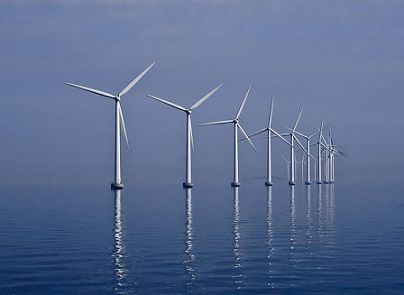China is the world’s largest producer of renewable energy. It dominates the field in hydropower, solar and wind energy. In 2019 it racked up a third of the world’s capacity, according to the International Renewable Energy Agency.
But it’s a relatively young industry in China – one that has been established in Denmark for much longer. With vast swathes of offshore wind-farms, Denmark produced 55 percent of its total energy from wind in 2019 – the highest figure in the world.
Danish help for Chinese teething problems
So it was the Danes that the Chinese authorities turned to in 2005, when they wanted to jumpstart their then-minimal wind sector.
“This collaboration is probably one of the best investments in CO2 reduction that Denmark has ever made,” said Kaare Sandholt of the China National Renewable Energy Centre.
For the first few years, Danish experts shared technical advice about efficient turbine set-ups. They helped their Chinese colleagues to find optimal locations for the turbines, measure wind to assess the potential power production, and develop technical requirements for the turbines.
“Back then, it was almost a ‘wild west’ with turbines of very mixed quality and without much planning,” explained Sandholt. “So Denmark provided start-up aid, and the first barriers to the sector were removed.”
Rocketing production exposes a lack in efficiency
Between 2005 and 2010, Chinese wind power production increased 35-fold.
“There was a lot of power production from the wind turbines. When it was too high for the system, they were just turning off the turbines” said Sandholt. “Some years, up to 20 percent of the production from the turbines was wasted.”
In Denmark, coal-based power is scaled down when wind energy is high. This means renewable energy always accounts for the maximum possible proportion of overall power.
“We sent good technicians from Denmark who showed how to turn down the coal power plants when there is a lot of wind energy” said Sandholt.
Combined with new detailed system models and grid planning to make renewable energy more reliable, the changes reduced Chinese wind energy wastage from 20 to three percent.
The future is green
Despite huge strides in renewable technology, China accounts for more than half of the world’s coal-burning. New coal plants are cropping up even as green initiatives increase.
In a nation of such high energy demand there are still “very high ceilings” for renewable sources in China.
“Sun and wind are cheaper than coal. The trend is clear: the green sector will grow, no doubt about it,” commented Sandholt.
A big impact
Indeed, with a record number of new turbines installed in 2020, Sandholt’s optimism is warranted.
“If they had had problems with their first large wind farms, we wouldn’t be seeing much wind energy now,” he said.
“Denmark’s help had a big impact – it’s a huge global climate gain”.















